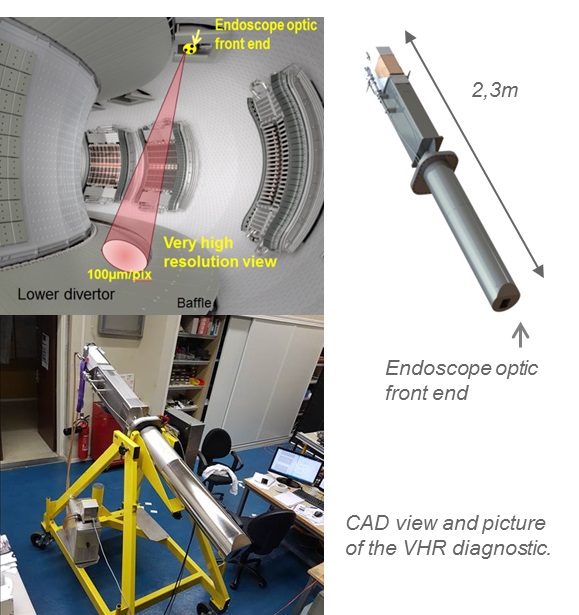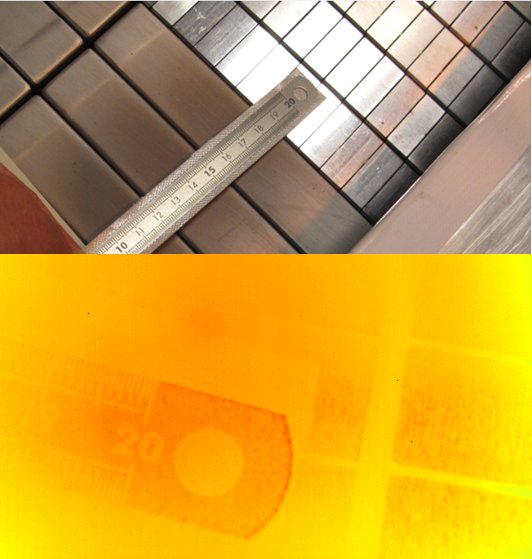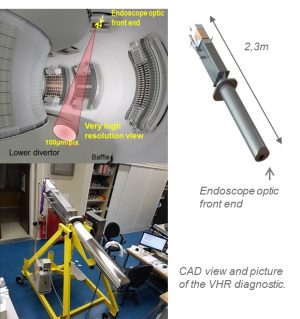A new Infrared diagnostic has been developed by IRFM to study heat loads on the W monoblocs of the Divertor plasma facing units (PFU) with a very high spatial resolution @ 100µm.
The objective is to study the effects of misalignments, mutual shadowing of the Divertor PFUs as well as the geometry (shaping) of the monoblocs. In this context, the heat load pattern resulting from the incident particle fluxes will be assessed allowing for studies on W Monobloc thermal behaviors (up to melting on the leading edges) as function of geometrical shape. The operational limits of both the PFUs and the monoblocs will be deduced. In order to correctly observe and analyze heat load phenomena on the tiny chamfered edges and in the small gaps between monoblocs (≈500 µm), a 100µm spatial resolution is required. These requirements can now be achieved thanks to the development of a Very High spatial Resolution (VHR) infrared diagnostic. In the WEST Tokamak, the study of heat loads on W monoblocs ITER-like using such High resolution Infrared diagnostic will address:
– The evaluation of the design of the monoblocs and plasma facing unit
– The study and behavior of damaged monoblocs.
– The alignment tolerance for the assembly of plasma facing unit
– The specification of future dedicated systems for the protection of the divertor in ITER.
The VHR infrared diagnostic developed for WEST is now operational and positioned on Q3B upper port above the divertor sector made of actively cooled W-monoblocs and graphite inertial components with W coating. The field of view is a 64*51 mm rectangle, which can be moved anywhere in a 30×40 cm observable area.
On the basis of our specification, the endoscope part of the diagnostic has been designed and manufactured by Paramount Advanced Technology Company. The optics is made of 4 spherical mirrors, 4 lenses and 2 flat mirrors which can be remotely moved to scan the observable surface.. The image is collected by the “home-made” WEST infrared camera which has a pixel matrix of 640*512. The diagnostic will proceed at 1.7µm wavelength to take advantage of the dynamic of the signal at this wavelength for the typical predicted temperature range (300 to 3600°C). Duration of 16mois has been required to deliver the endoscope (from the call of tender up to the installation on WEST). Qualifications tests have been performed in labs and shown a good compliance with specifications: achievement of 100µm resolution with 40% of encircled energy @ 1.7µm.




